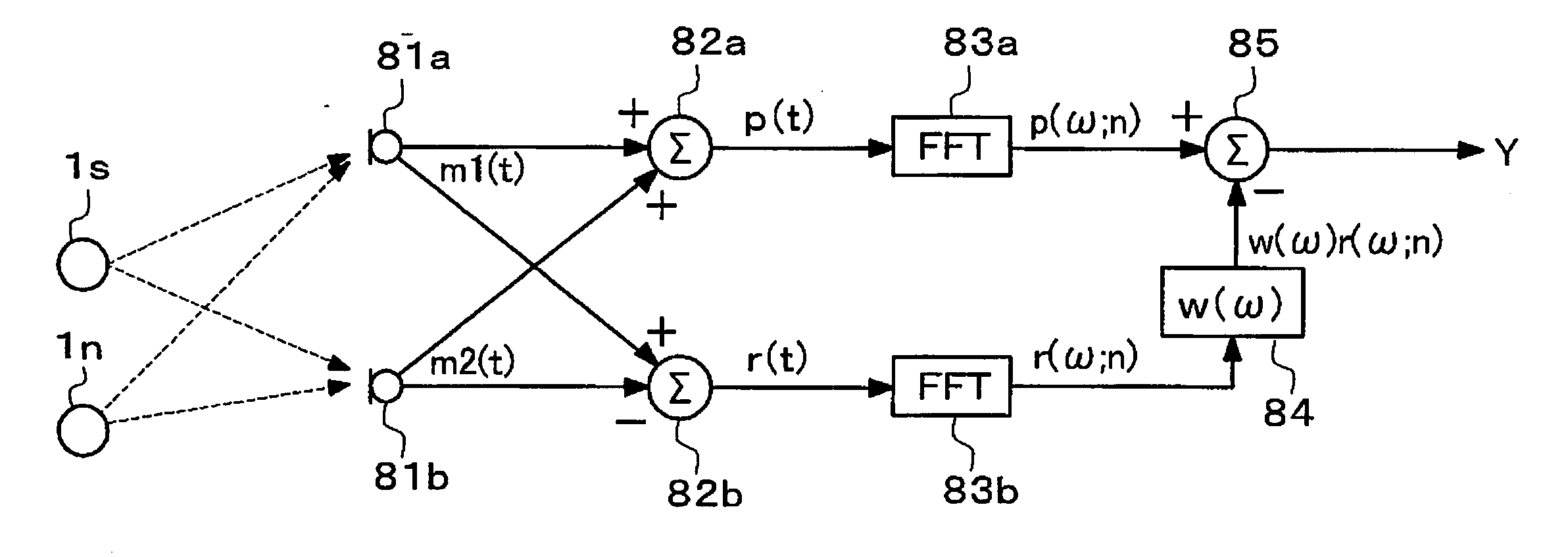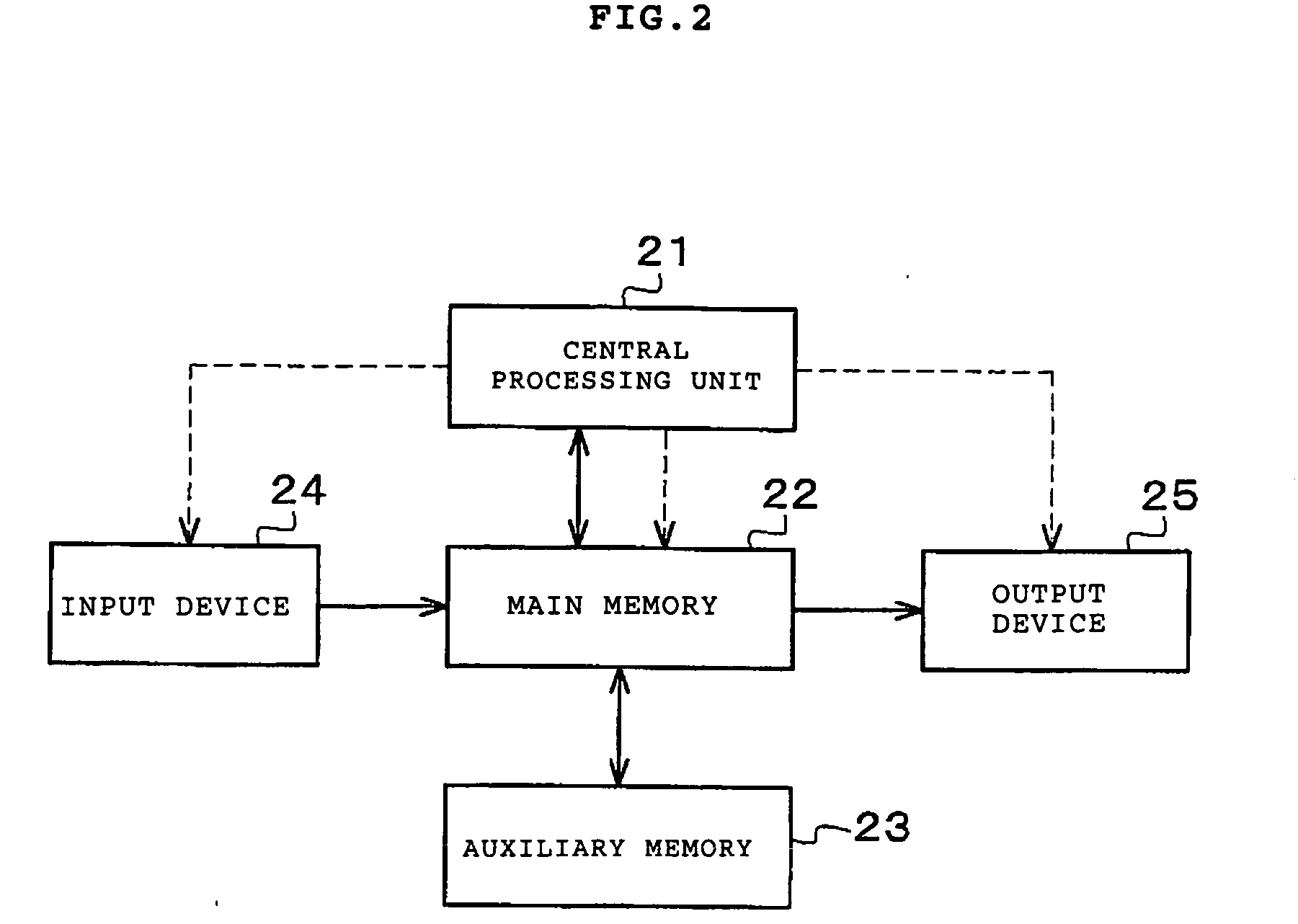Signal enhancement and speech recognition
a speech recognition and signal enhancement technology, applied in speech analysis, speech recognition, instruments, etc., can solve the problems of deteriorating recognition accuracy, difficult to estimate the filter coefficient w() for removing, and limited number of microphones capable of speech inpu
- Summary
- Abstract
- Description
- Claims
- Application Information
AI Technical Summary
Benefits of technology
Problems solved by technology
Method used
Image
Examples
Embodiment Construction
[0057] This invention provides signal enhancement devices and speech recognition. In an example embodiment a signal enhancement device includes: spectral subtraction means for subtracting a given reference signal from a main input signal containing a target signal and a noise signal by spectral subtraction; an adaptive filter applied to the reference signal; coefficient control means for controlling a filter coefficient of the adaptive filter in order to reduce components of the noise signal in the main input signal; and a database of a signal model concerning the target signal expressing a given feature by means of a given statistical model. Here, the coefficient control means performs control of the filter coefficient based on a likelihood of the signal model with respect to an output signal from the spectral subtraction means.
[0058] Furthermore, a signal enhancement method of the present invention comprises: performing spectral subtraction for obtaining an enhanced output signal...
PUM
 Login to View More
Login to View More Abstract
Description
Claims
Application Information
 Login to View More
Login to View More - R&D
- Intellectual Property
- Life Sciences
- Materials
- Tech Scout
- Unparalleled Data Quality
- Higher Quality Content
- 60% Fewer Hallucinations
Browse by: Latest US Patents, China's latest patents, Technical Efficacy Thesaurus, Application Domain, Technology Topic, Popular Technical Reports.
© 2025 PatSnap. All rights reserved.Legal|Privacy policy|Modern Slavery Act Transparency Statement|Sitemap|About US| Contact US: help@patsnap.com



